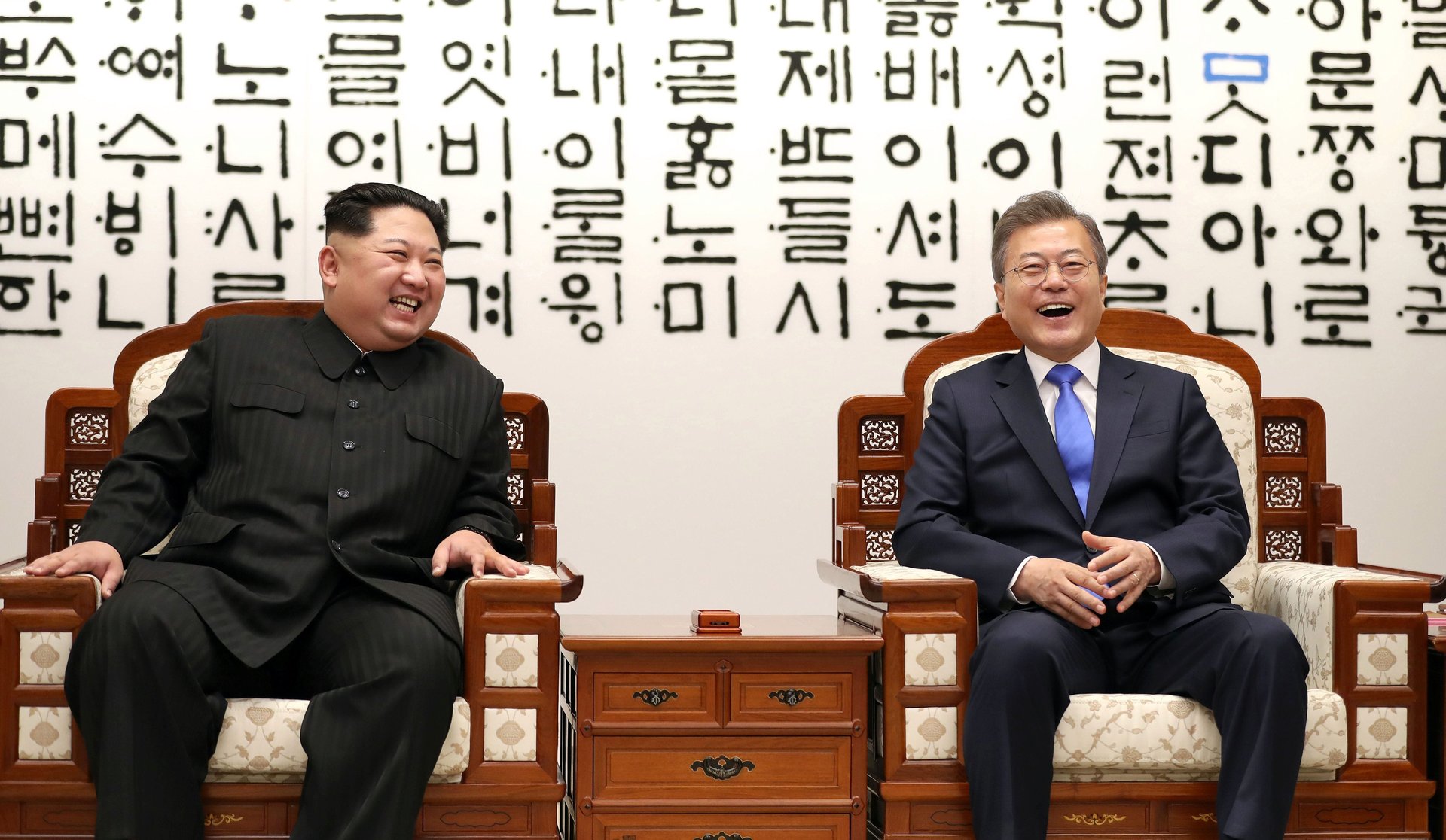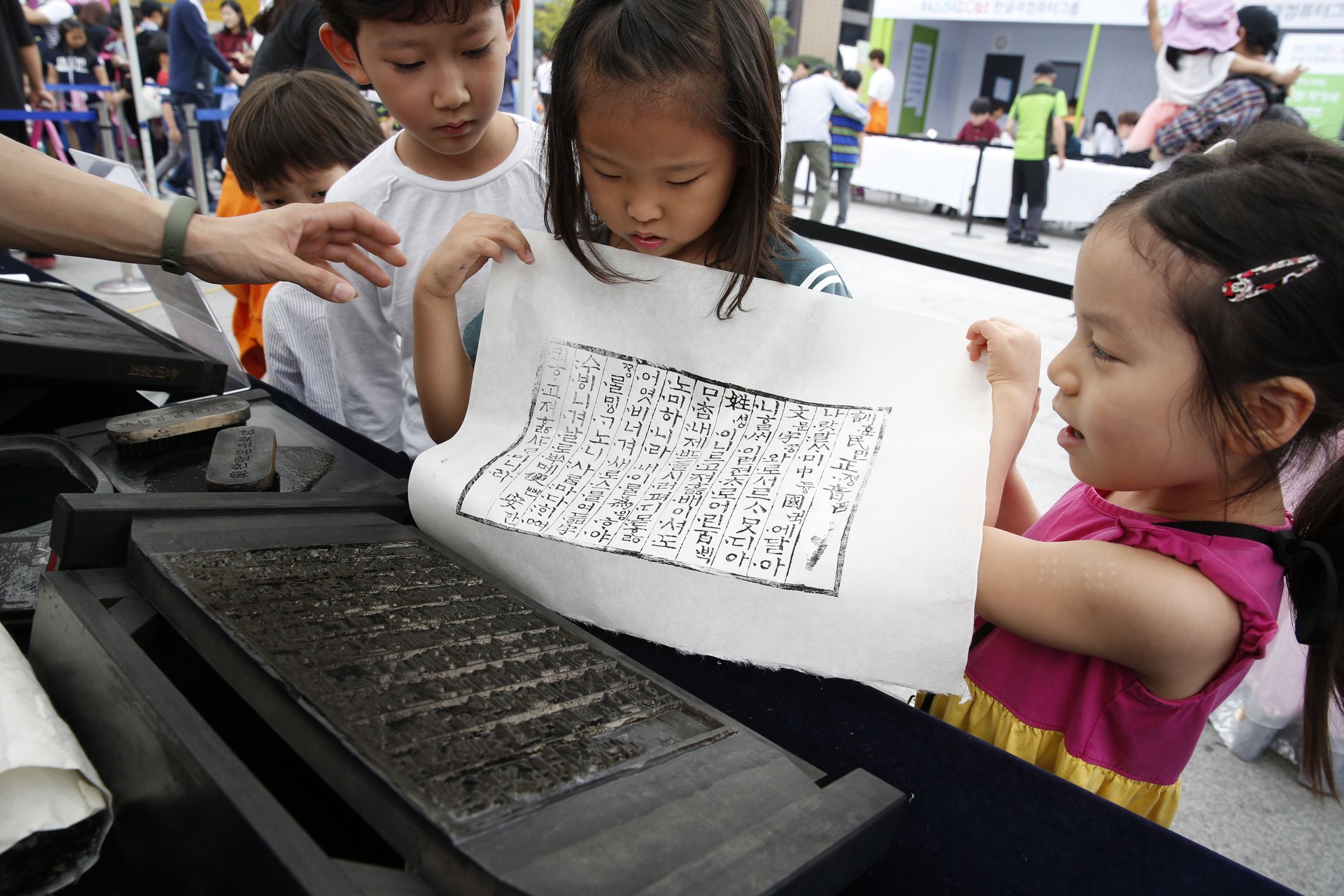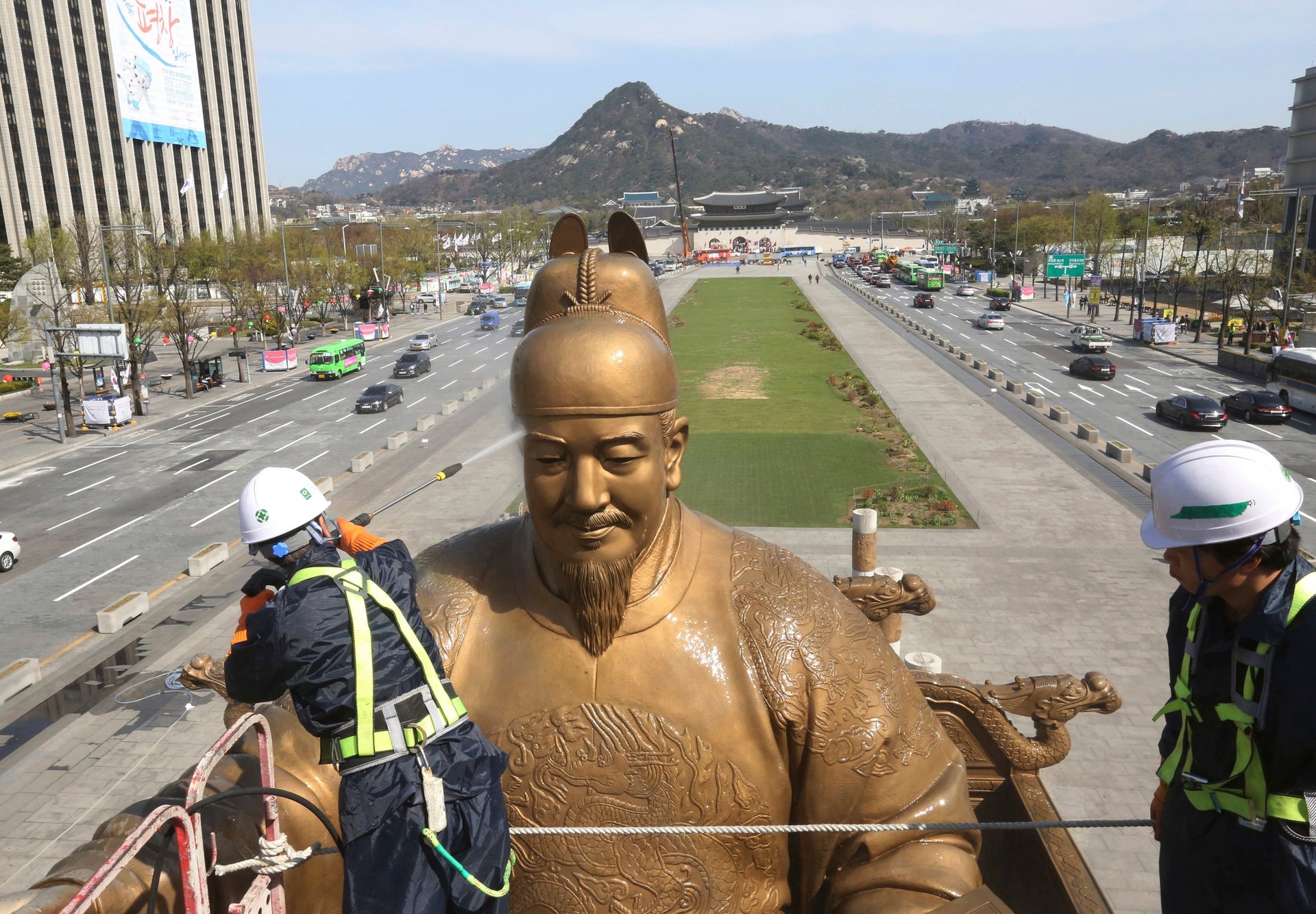South Korea dreams of a shared dictionary with the North
Koreans are immensely proud of their alphabet, known as hangul (also hangeul), and celebrate it every year with a public holiday on Oct. 9. However, this year’s celebrations are taking on an even more emotional tone, as the South Korean government—in the midst of a rapprochement with the North—reminds its people that it isn’t just the peninsula that is divided, but also the Korean language.


Koreans are immensely proud of their alphabet, known as hangul (also hangeul), and celebrate it every year with a public holiday on Oct. 9. However, this year’s celebrations are taking on an even more emotional tone, as the South Korean government—in the midst of a rapprochement with the North—reminds its people that it isn’t just the peninsula that is divided, but also the Korean language.

In 2005, former prime minister Roh Moo-hyun conceived a joint dictionary, but like other diplomatic efforts it has seen its fortunes rise and fall with the state of inter-Korean relations. Called the “grand dictionary of the national language,” the project, which planned to contain some 330,000 words, was suspended in 2016 as relations deteriorated.
Now, with relations between the two former foes better than ever before, South Korea’s prime minister Lee Nak-yeon said that it’s committed to restarting work on a common North-South dictionary with its neighbor—in a speech that deeply invoked King Sejong, the monarch who invented the alphabet in 1446, and the unified Korea that he presided over. South Korea said discussions on the resumption of the dictionary project will be held in November or December with North Korea.
“We were of one nation when King Sejong invented hangul. But the Cold War divided the Korean tribe and its territory into two,” Lee said, according to South Korean news agency Yonhap. “The 70 years of division is changing the meaning and use of Korean words in the South and the North.”
He added that “the Koreas can become one, as in the years ruled by King Sejong.” (This year also marks the 600th anniversary of King Sejong’s coronation.)

North Korea marks the creation of hangul on Jan. 15, where it’s called Chosongul Day (“choson” being an old name for Korea). The alphabet is beloved and respected by Koreans as it provided an easy-to-learn and intuitive way for any citizen regardless of social status to read and write, in place of the Chinese characters that were in use at the time.
The language is also increasingly becoming a symbol of South Korea’s soft power thanks to the proliferation of its pop culture—boy band BTS will even be recognized by the government for its role in spreading hangul globally. “Young people around the world write down the lyrics of BTS songs in Hangul,” the prime minister said.
Those lyrics, however, may not make sense to most North Koreans. One estimate says that about 70% of words are mutually intelligible between the two countries. Some words that are in wide usage only in North Korea, for example, might be reflective of its socialist and totalitarian sociopolitical system, while in South Korea, many loanwords from foreign languages would draw blanks from people in the North. Han Yong-un, who heads the dictionary’s compilation department in South Korea, told the Korea Herald newspaper earlier this year that the word “tax” presented particular difficulties for North Koreans as they do not have a tax system.
Getting Koreans on both sides of the border to understand each other is of course more than just an emotive plea for the unity of a divided people—it’s a very practical problem that could impede the cooperation needed to further improve relations, as Seoul and Pyongyang agree to a host of joint projects including the construction of railways and roads that require a precise understanding of technical language.
As exchanges between the two countries proliferated this year, one example of language barriers stood out. When they fielded a joint female ice-hockey team at the Pyeongchang Winter Olympics in February, athletes had difficulty understanding each other. South Korea hockey players had adopted English words such as “skating,” while North Koreans had Korean versions of those terms. South Korean authorities ended up publishing a glossary of key vocabulary to help players understand each other.